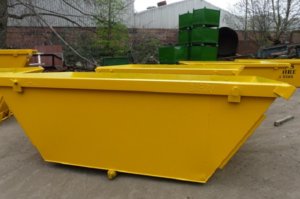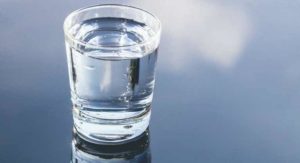7 Tree Diseases You Should Know About and How to Treat Them

We can cry out and seek help when we are in pain, but what about the trees around us? They cannot express themselves as we can. So, it is entirely our responsibility to check up on our green friends. Take care of them just like they take care of us. And oh so, selflessly!
Little efforts like inspecting them from time to time prevent trees and plants from succumbing to diseases. However, if trees become severely ill, it makes them more vulnerable. In situations like this, seeking professional help is the best solution.
Hence, if you feel your trees are suffering from diseases that are beyond your comprehension, it must be alarming for you. So, to escape from such a situation you can get the best tree disease treatment by TreeDoctor. They promise to provide professional help that can save your trees from any fatality.
What are the most common diseases that trees seem to suffer from?
The trees in your garden and backyard might be suffering from some fatal diseases. It is quite possible that you might not be very aware of them or their treatment. So let us take a closer look at these diseases that you need to watch out for!
- Anthracnose
It is a fungal disease. Generally, fungi seem to attack the stems, leaves, fruits and flowers of a tree. The disease is most prevalent in North America. Particularly sycamore, ash, oak, maple and flowering dogwood are the most susceptible to anthracnose.
- Symptoms–
The disease has a varied range of symptoms. It causes defoliation, wilting and tissue damage. The attack is especially on growing leaves and shoots. Colletotrichum or Gloeosporium are the causative fungi that characteristically produce spores in tiny, sunken, saucer-shaped fruiting bodies known as acervuli. Namely, lesions, sunken spots, cankers on twigs or branches are the visible signs.
However, the severity of the infection ranges from unsightliness to death based on the causative agent. The infected species also plays a huge role in determining the severity.
Get the best tree disease treatment by TreeDoctor and help your trees today.
- Treatment-
- It is important to clean up your garden every once in a while. If dead or infected plants are not removed, they might infect many more.
- Copper-based fungicide is also useful. You can spray your plants with them. However, keep in mind that copper can increase the toxicity levels in the soil. Especially for microbes and good pathogens.
- You must make sure the soil you plant your trees is nourishing in nature. Usually, adding compost and refraining from harmful pesticides is quite helpful
- Try to use a drip sprinkler to water your plants instead of an overhead sprinkler.
Some effective fungicides that you must know about are thiabendazole and propiconazole. In addition, try to maintain good sanitation in your garden. This helps in reducing disease inoculum.
- Apple Scab
It is primarily a foliar leaf disease. Usually, it is more prevalent during the early blooming season. Crabapples particularly are the focus of this attack. Although it is not a severe disease it can still make the tree look unappealing and scraggly.
- Symptoms-
During spring when this disease usually attacks trees, leaf litter gets wet. This is a major indicator of apple scab. Spores get released which might get carried away to different areas. As a result, a lot of trees can come in contact with the infection.
Olive-green to black velvety spots can be visible on leaves with indistinct margins. In severe cases, leaves can be subjected to discoloration and early defoliation. Fruits develop black lesions which turn brown and corky over time. The causative fungus is Venturia inaequalis.
- Treatment-
- Make sure your garden is not overcrowded. Try to plant trees in a way that there is still space allowing airflow to the canopy. In this way, prevention of disease development is possible
- Removing destroyed leaves and flowers is important. So that fungi are unable to overwinter. However, this still does not ensure disease prevention but helps in maintaining plant health
- You must apply fungicide at intervals of two weeks. Usually, it is preferable if you start the application in spring.
Using fungicides that contain ingredients like fenarimol are quite useful. Want a better idea of treatment? Get the best tree disease treatment by TreeDoctor.
- Cedar Rusts
Cedar rust or Cedar Apple Rust is a fungal disease. They are a quite common foliar disease found in rosaceous plants, such as hawthorn, junipers and crabapple. This fungal disease has a complicated two years life span. Usually, it depends on these junipers (shrubs) to complete its life cycle. The causative fungi does not kill its host (biotrophs) but makes them suffer.
- Symptoms-
Gymnosporangium juniperi-virginianae is the fungi responsible for cedar rust. Its life starts from junipers as an aeciospore. Which likely gets carried from apples to its new host by the wind during early fall or late spring. By the following summer, a visibly grown ball develops over the twigs or fruits.
The leaves seemingly develop yellow on their upper surface soon after they bloom. Usually, these symptoms appear on leaves and twigs.
- Treatment-
- It is advisable to take a mixed approach to treat or control cedar rusts. Taking the best from both chemical and cultural methods, you can find a way to fix cedar rusts!
- However, if lesions are already visible on the apple leaves or fruit, it might be too late to control the fungus.
- In such a situation, you should aim at purging infected leaves and fruits from around trees that are still healthy
- Application of fungicide can also be helpful.
- Pruning the rust galls from the junipers is also very crucial
A very important ingredient in the fungicide is triadimefon which helps treat Cedar Rusts.
- Canker Disease
It is a bacterial or fungal disease. Usually, the pathogens attack the woody areas. It is capable of causing serious structural damage. So much so that the branches may break in a snap. It is characterised as a localised disease. Such as a lesion on the bark.
- Symptoms-
A lesion in the bark of a tree can lead to an open wound. It may start as a dead area. However, the canker can enlarge and spread towards the twigs or branches.
The pathogens aim at killing the Xylem- the water-conducting tissue. As a result, there is gradual or rapid wilting and withering. The leaves on wounded parts are often smaller than usual. Soon, discoloration takes place. They turn into pale green then yellow or brown. The diseased leaves eventually get curled and become sparse. When there is a canker on the trunk near the soil line, it is called a crown canker or collar rot.
- Treatment-
- It is important to remove dead twigs or branches daily
- Pruning in wet weather is strictly unadvisable. Since it will only encourage fungi growth
- There is a lack of chemical treatment for canker disease. So, it is best if you give the care and nutrients to your trees to keep them healthy
- Apply dormant oil at the beginning of every spring. Since this will keep insects at bay
- During summer try to apple fungal and insecticide
- Diplodia tip blight
This is a common fungal disease that usually attacks the pines. It is most prevalent in the urban setting. The infection starts at the base of the tree and develops upwards. Visible expansion of candles and needles take place. Eventually, they come in contact with the infection and die.
Mature trees are mostly at the focus of this fungal attack. Since they have been subjected to stress, they are more susceptible to infection. This disease is prevalent throughout the Great Plains, Midwest, Northeast, and California.
- Symptoms-
The characteristic feature of this disease is the blight or the dieback of branch tips. If the infection lasts for very long, then they start appearing brown. The tree as a whole gets deformed.
This disease starts developing on new shoots. Eventually, turning the new needles brown. Even before they are fully formed they enter their death cycle. It can kill mature trees. The pathogen might attack older tissues or open wounds.
- Treatment-
- Applying fungicide prevent infections in young shoots
- Any new growth should be protected right from bud swell to proper candle expansion
- You must remove blighted shoots. However, this does not ensure a decrease in the number of spores.
- Nevertheless, blighted shoot removal keeps the plant healthy
- Lethal yellow of palm
It is a bacterial disease most prevalent in the areas of Florida and Texas. The causative bacteria is phytoplasma. This causes the lethal yellowing of the leaves. A planthopper insect acts like a transmitter.
- Symptoms-
The disease portrays a wide variety of symptoms. Signs and symptoms differ based on the host species. But in general flower death, premature fruit drop and foliage yellowing are characteristic symptoms. Eventually, the infected palms die three to five months after getting infected.
- Treatment-
- The best solution is injecting the trunk with antibiotic chemicals.
- An effective ingredient is Oxytetracycline hydrochloride
- Make sure to remove any infected plants
- Experts recommend using resistance species
7.Powdery mildew
It is another example of a fungal disease. These pathogens grow superficially on the plant and produce mycelium- fungal threads. It is one of the widespread diseases amongst plants. The fungi cause powdery occurrences on the surface of leaves, flowers, branches and fruits. Plants throughout the United States suffer from this disease.
- Symptoms-
The symptoms usually appear in the latter half of the growing season. It starts with young leaves. Blister-like spots appear on the leaves. Eventually, they get curled exposing the underneath surface.
Moreover, the infected leaves become covered with grey powder-like substances. Young flower buds get covered by mildew and may never bloom. The disease usually attacks young flowers and shoots. Mature plants are rarely affected.
- Treatment-
- Pruning is very important for good airflow
- Cleaning debris and removing diseased foliage from the plant
- Milk spray is an effective homemade treatment. It must contain 40% milk and 60% water
- Lastly, using organic fertilizer and avoiding nitrogen fertilizers are advisable.
To Sum Up
Disease control should be one of the priorities in our lives. Trees cannot reach out for help. Hence, it is our responsibility to take care of them, nourish them. At times, professional help is necessary. It is advisable not to neglect such situations. Get the best tree disease treatment by TreeDoctor and keep your green friends healthy!
AUTHOR BIO
Name:- Jordan Everett (Tree & Plant Healthcare Specialist)
Jordan Everett is a tree and plant healthcare specialist at Tree Doctor. He is highly experienced in diagnosing and treating numerous tree and plant species. Correct identification of the tree healthcare problem, proper care, and regular monitoring is of utmost importance to let your tree grow stress-free and stay healthy.
So, to make readers aware of tree health dangers, requirements, and management, he has given extensive information on invisible signs of health hazards to trees, plants, and shrubs, secrets of tree preservation, tree & plant healthcare tips, and soil & root care treatment through his blogs. Read our recent post related to tree and plant health problems, in-depth assessment, unique treatment solutions, prevention, tips to improve drought tolerance, how to increase tree and plant longevity, stabilize older and declining trees in San Diego.






